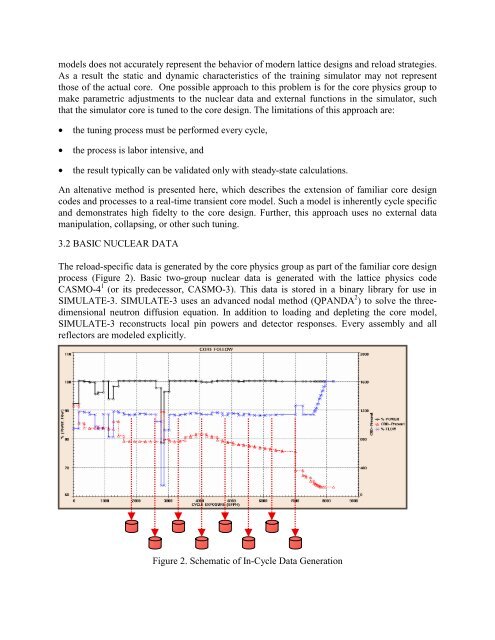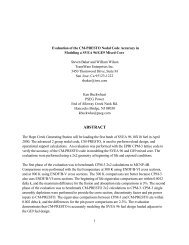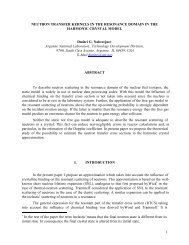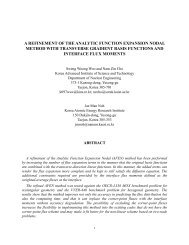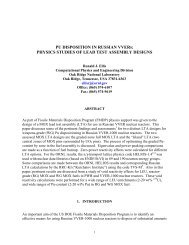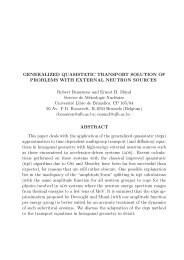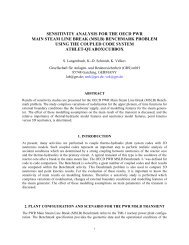J. Borkowski, K. Smith, D. Hagrman, and J. Rhodes, III
J. Borkowski, K. Smith, D. Hagrman, and J. Rhodes, III
J. Borkowski, K. Smith, D. Hagrman, and J. Rhodes, III
You also want an ePaper? Increase the reach of your titles
YUMPU automatically turns print PDFs into web optimized ePapers that Google loves.
models does not accurately represent the behavior of modern lattice designs <strong>and</strong> reload strategies.<br />
As a result the static <strong>and</strong> dynamic characteristics of the training simulator may not represent<br />
those of the actual core. One possible approach to this problem is for the core physics group to<br />
make parametric adjustments to the nuclear data <strong>and</strong> external functions in the simulator, such<br />
that the simulator core is tuned to the core design. The limitations of this approach are:<br />
• the tuning process must be performed every cycle,<br />
• the process is labor intensive, <strong>and</strong><br />
• the result typically can be validated only with steady-state calculations.<br />
An altenative method is presented here, which describes the extension of familiar core design<br />
codes <strong>and</strong> processes to a real-time transient core model. Such a model is inherently cycle specific<br />
<strong>and</strong> demonstrates high fidelty to the core design. Further, this approach uses no external data<br />
manipulation, collapsing, or other such tuning.<br />
3.2 BASIC NUCLEAR DATA<br />
The reload-specific data is generated by the core physics group as part of the familiar core design<br />
process (Figure 2). Basic two-group nuclear data is generated with the lattice physics code<br />
CASMO-4 1 (or its predecessor, CASMO-3). This data is stored in a binary library for use in<br />
SIMULATE-3. SIMULATE-3 uses an advanced nodal method (QPANDA 2 ) to solve the threedimensional<br />
neutron diffusion equation. In addition to loading <strong>and</strong> depleting the core model,<br />
SIMULATE-3 reconstructs local pin powers <strong>and</strong> detector responses. Every assembly <strong>and</strong> all<br />
reflectors are modeled explicitly.<br />
Figure 2. Schematic of In-Cycle Data Generation


